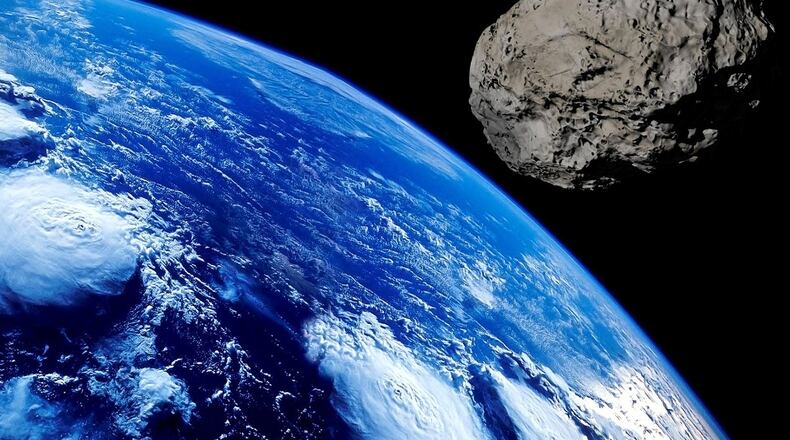Add an approaching asteroid to the list of 2020 zingers.
That’s right, a big chunk of space rock is estimated to hurtle within 3,100 miles of Earth on Nov. 2, the day before the U.S. presidential election, and there is a slight chance for an actual collision.
Scientists at NASA say there’s no cause for alarm, but let’s be honest — it’s been that kind of year so far with the nation already racked by the coronavirus pandemic, racial unrest and an unnerving hurricane season bearing down.
Now there’s an asteroid to worry about, too.
The celestial body known as 2018VP1 has about a 0.41% chance of hitting Earth, but because it’s so small — approximately 6½ feet in diameter — NASA believes it “poses no threat to Earth. If it were to enter our planet’s atmosphere, it would disintegrate due to its extremely small size,” the agency said in a statement.
By comparison, the asteroid that supposedly killed the dinosaurs was estimated to be about 6 miles across.
Near Earth Asteroids, or NEAs, are common and pass by Earth all the time.
Earlier this month, an SUV-size space rock passed within 1,830 miles of Earth, flying above the southern Indian Ocean on Aug. 16, according to NASA.
Asteroid 2020 QG set a record for the closest-ever flyby without impact.
The approaching 2018VP1 asteroid, meanwhile, was discovered in 2018 by the Palomar Observatory in California when it was 280,000 miles away. The object is orbiting within the solar system and is circling back toward Earth, NASA said.
“NASA has been directed by Congress to discover 90% of the near-Earth asteroids larger than 459 feet in size and reports on asteroids of any size.”
About the Author
Keep Reading
The Latest
Featured


